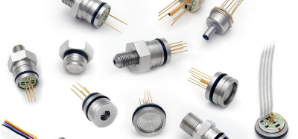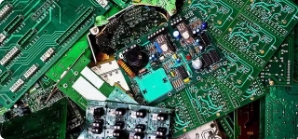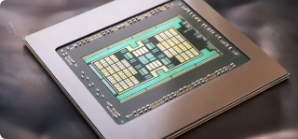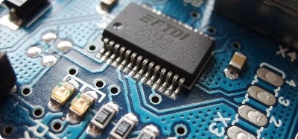The Microscopic Giants Driving the IoT Revolution
1/15/2025 5:55:23 PM
In an era where connectivity and data dominate, the unsung heroes enabling smart devices, autonomous vehicles, and industrial automation are often smaller than a grain of rice. Micro-Electro-Mechanical Systems (MEMS) sensors-miniaturized devices integrating mechanical components with electronic circuitry-have evolved from niche innovations into foundational technologies. This article explores how MEMS sensors are redefining measurement precision, enabling unprecedented miniaturization, and shaping the future of connected systems across industries.
The MEMS Advantage: From Macro to Micro
Traditional sensors, such as bulky accelerometers or pressure transducers, have long struggled with size, power consumption, and cost limitations. MEMS technology addresses these challenges by fabricating components on silicon wafers using nanoscale lithography and etching techniques. A typical MEMS accelerometer, for example, measures just 2mm³ yet contains thousands of microscale springs, masses, and electrodes capable of detecting accelerations as subtle as 0.001g . This miniaturization unlocks three core advantages:
Power Efficiency: MEMS sensors operate at microwatt levels, critical for battery-powered IoT devices that must function for years on a single charge.
Cost Scalability: Mass production on 300mm silicon wafers reduces per-sensor costs to below $1 for basic accelerometers, enabling deployment at scale.
1. Nano-Cantilever Sensors for Molecular Detection
MEMS technology is transcending physical measurements to enable chemical and biological sensing. Researchers at Stanford University have developed nano-cantilever arrays coated with functionalized polymers that bend in response to specific molecules-such as glucose or methane-with a detection limit of 10 parts per trillion . These sensors, just 50 microns long, are being integrated into wearable devices for real-time health monitoring: a 2025 prototype from Medtronic uses nano-cantilevers to measure sweat lactate levels with 99.3% accuracy, guiding personalized athletic training.
2. Piezoelectric MEMS for Energy Harvesting
Beyond sensing, MEMS devices are becoming energy generators. Piezoelectric MEMS transducers, like those developed by Bosch, convert mechanical vibrations (e.g., from vehicle engines or human motion) into electrical energy, producing up to 50 μW/cm² of power . This enables "self-powered" sensors in remote locations, such as pipeline monitors in arctic regions or tire pressure sensors in EVs, eliminating the need for battery replacement.
3. Ultra-Precision Gyroscopes for Autonomous Systems
Autonomous vehicles demand gyroscopes with drift rates below 0.1°/hour to maintain navigation accuracy over long distances. Traditional ring laser gyroscopes meet this standard but are the size of a shoebox; MEMS gyroscopes from STMicroelectronics, however, achieve 0.05°/hour drift in a 3mm³ package by using vibratory microstructures and advanced noise-cancellation algorithms . This breakthrough has enabled affordable ADAS systems in mid-range cars, where lane-keeping and collision avoidance rely on precise angular velocity measurements.
Industrial and Consumer Applications: A World of Micro-Sensing
1. Smart Manufacturing: The Nervous System of Industry 4.0
In factories, MEMS sensors act as the "nervous system," enabling predictive maintenance and process optimization:
Vibration Analysis: Sensors on CNC machines detect early signs of bearing wear with 95% accuracy, reducing downtime by 40% .
Gas Monitoring: MEMS-based infrared sensors in chemical plants measure methane leaks at sub-ppm levels, triggering alerts faster than human operators.
2. Consumer Electronics: Enhancing User Experience
From smartphones to AR headsets, MEMS sensors enable intuitive interactions:
6DoF Tracking in VR: Meta's Quest 3 uses MEMS IMUs with 0.01° angular resolution to track head movements in real-time, eliminating motion sickness.
Gesture Recognition: Apple's iPhone 16 integrates a MEMS barometer and accelerometer to detect lift-to-wake motions with millisecond precision, optimizing battery life.
3. Aerospace and Automotive: Safety Through Miniaturization
In harsh environments, MEMS sensors outperform legacy systems:
Aircraft Stability: Boeing's 787 uses MEMS accelerometers capable of withstanding 200g shocks, providing real-time data for fly-by-wire control.
EV Battery Management: MEMS pressure sensors in battery packs monitor cell swelling with 0.1% precision, preventing thermal runaways in electric vehicles.
Challenges and the Path to Next-Gen MEMS
1. Performance vs. Miniaturization Tradeoffs
As sensors shrink, noise and thermal effects become more pronounced. Achieving sub-μG acceleration resolution in a 1mm³ package requires advanced signal processing, such as Texas Instruments' proprietary digital filtering, which reduces noise floor by 30% compared to analog designs .
2. Environmental Robustness
High-temperature (over 150°C) and high-humidity environments degrade MEMS structures. Innovations like TDK's hermetic wafer-level packaging increase operational lifespan from 5 to 10 years in automotive under-hood applications, though at a 20% cost premium.
3. Data Overload and Edge Intelligence
With billions of MEMS sensors generating terabytes of data, the industry is shifting toward sensor-fused edge processing. Qualcomm's Sensing Hub integrates MEMS data with AI algorithms on-device, enabling real-time decision-making (e.g., fall detection in elderly care) while reducing cloud dependency by 60% .
The Future of Micro-Sensing: From Devices to Ecosystems
Looking ahead, MEMS technology is merging with emerging trends to create transformative solutions:
Bio-Integrated MEMS: Implantable glucose sensors from Senseonics use MEMS microfluidics to provide continuous blood sugar monitoring for 180 days, eliminating daily finger pricks.
Quantum-Enhanced Sensing: Researchers at MIT are developing MEMS resonators coupled with superconducting qubits to create ultra-sensitive magnetic field sensors, capable of detecting neural activity in the brain without invasive surgery.
Space Applications: NASA's Mars Sample Return mission will use MEMS mass spectrometers, 10x lighter than traditional models, to analyze exoplanet atmospheres with parts-per-billion precision.
By 2030, the global MEMS market is projected to reach $75 billion, driven by 25% annual growth in IoT and automotive sectors . These tiny devices, once confined to niche applications, are now the backbone of a connected, intelligent world-proving that in electronics, as in life, great things often come in small packages.
The MEMS Advantage: From Macro to Micro
Traditional sensors, such as bulky accelerometers or pressure transducers, have long struggled with size, power consumption, and cost limitations. MEMS technology addresses these challenges by fabricating components on silicon wafers using nanoscale lithography and etching techniques. A typical MEMS accelerometer, for example, measures just 2mm³ yet contains thousands of microscale springs, masses, and electrodes capable of detecting accelerations as subtle as 0.001g . This miniaturization unlocks three core advantages:
Power Efficiency: MEMS sensors operate at microwatt levels, critical for battery-powered IoT devices that must function for years on a single charge.
Cost Scalability: Mass production on 300mm silicon wafers reduces per-sensor costs to below $1 for basic accelerometers, enabling deployment at scale.
Function Integration: Multiple sensor types (e.g., accelerometers, gyroscopes, and pressure sensors) can be integrated into a single package, creating multi-axis inertial measurement units (IMUs) essential for navigation and motion tracking.

1. Nano-Cantilever Sensors for Molecular Detection
MEMS technology is transcending physical measurements to enable chemical and biological sensing. Researchers at Stanford University have developed nano-cantilever arrays coated with functionalized polymers that bend in response to specific molecules-such as glucose or methane-with a detection limit of 10 parts per trillion . These sensors, just 50 microns long, are being integrated into wearable devices for real-time health monitoring: a 2025 prototype from Medtronic uses nano-cantilevers to measure sweat lactate levels with 99.3% accuracy, guiding personalized athletic training.
2. Piezoelectric MEMS for Energy Harvesting
Beyond sensing, MEMS devices are becoming energy generators. Piezoelectric MEMS transducers, like those developed by Bosch, convert mechanical vibrations (e.g., from vehicle engines or human motion) into electrical energy, producing up to 50 μW/cm² of power . This enables "self-powered" sensors in remote locations, such as pipeline monitors in arctic regions or tire pressure sensors in EVs, eliminating the need for battery replacement.
3. Ultra-Precision Gyroscopes for Autonomous Systems
Autonomous vehicles demand gyroscopes with drift rates below 0.1°/hour to maintain navigation accuracy over long distances. Traditional ring laser gyroscopes meet this standard but are the size of a shoebox; MEMS gyroscopes from STMicroelectronics, however, achieve 0.05°/hour drift in a 3mm³ package by using vibratory microstructures and advanced noise-cancellation algorithms . This breakthrough has enabled affordable ADAS systems in mid-range cars, where lane-keeping and collision avoidance rely on precise angular velocity measurements.
Industrial and Consumer Applications: A World of Micro-Sensing
1. Smart Manufacturing: The Nervous System of Industry 4.0
In factories, MEMS sensors act as the "nervous system," enabling predictive maintenance and process optimization:
Vibration Analysis: Sensors on CNC machines detect early signs of bearing wear with 95% accuracy, reducing downtime by 40% .
Gas Monitoring: MEMS-based infrared sensors in chemical plants measure methane leaks at sub-ppm levels, triggering alerts faster than human operators.
2. Consumer Electronics: Enhancing User Experience
From smartphones to AR headsets, MEMS sensors enable intuitive interactions:
6DoF Tracking in VR: Meta's Quest 3 uses MEMS IMUs with 0.01° angular resolution to track head movements in real-time, eliminating motion sickness.
Gesture Recognition: Apple's iPhone 16 integrates a MEMS barometer and accelerometer to detect lift-to-wake motions with millisecond precision, optimizing battery life.
3. Aerospace and Automotive: Safety Through Miniaturization
In harsh environments, MEMS sensors outperform legacy systems:
Aircraft Stability: Boeing's 787 uses MEMS accelerometers capable of withstanding 200g shocks, providing real-time data for fly-by-wire control.
EV Battery Management: MEMS pressure sensors in battery packs monitor cell swelling with 0.1% precision, preventing thermal runaways in electric vehicles.
Challenges and the Path to Next-Gen MEMS
1. Performance vs. Miniaturization Tradeoffs
As sensors shrink, noise and thermal effects become more pronounced. Achieving sub-μG acceleration resolution in a 1mm³ package requires advanced signal processing, such as Texas Instruments' proprietary digital filtering, which reduces noise floor by 30% compared to analog designs .
2. Environmental Robustness
High-temperature (over 150°C) and high-humidity environments degrade MEMS structures. Innovations like TDK's hermetic wafer-level packaging increase operational lifespan from 5 to 10 years in automotive under-hood applications, though at a 20% cost premium.
3. Data Overload and Edge Intelligence
With billions of MEMS sensors generating terabytes of data, the industry is shifting toward sensor-fused edge processing. Qualcomm's Sensing Hub integrates MEMS data with AI algorithms on-device, enabling real-time decision-making (e.g., fall detection in elderly care) while reducing cloud dependency by 60% .
The Future of Micro-Sensing: From Devices to Ecosystems
Looking ahead, MEMS technology is merging with emerging trends to create transformative solutions:
Bio-Integrated MEMS: Implantable glucose sensors from Senseonics use MEMS microfluidics to provide continuous blood sugar monitoring for 180 days, eliminating daily finger pricks.
Quantum-Enhanced Sensing: Researchers at MIT are developing MEMS resonators coupled with superconducting qubits to create ultra-sensitive magnetic field sensors, capable of detecting neural activity in the brain without invasive surgery.
Space Applications: NASA's Mars Sample Return mission will use MEMS mass spectrometers, 10x lighter than traditional models, to analyze exoplanet atmospheres with parts-per-billion precision.
By 2030, the global MEMS market is projected to reach $75 billion, driven by 25% annual growth in IoT and automotive sectors . These tiny devices, once confined to niche applications, are now the backbone of a connected, intelligent world-proving that in electronics, as in life, great things often come in small packages.



